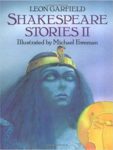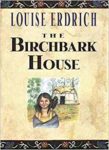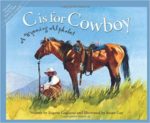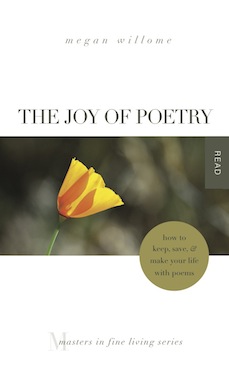August is hot, and the heat saps my mental energy. I’ve found myself reading more slowly. I’ve ignored podcasts, listening instead to the second book in George R.R. Martin’s series A Song of Ice and Fire: A Clash of Kings. And I’ve savored poetry, filling books with turned down corners and pencil marks and sticky notes to mark pages.
At Tweetspeak, books matter. We host book clubs, we review books, and we publish them at T.S. Poetry Press. Do you want to be a wild reader? Are you reading wildly already? We’re using Donalyn Miller’s Reading in the Wild: The Book Whisperer’s Keys to Cultivating Lifelong Reading Habits to explore what it means to be a wild reader — someone who embraces literacy for life. Read through these five characteristics and see which ones fit your reading style and which you might incorporate this month. Or add your own.
5 Main Characteristics of Wild Readers
1. They dedicate time to read.

2. They self-select reading material.
Through a quirk in my library’s holdings, I read this series by Louise Erdrich in reverse order, 
3. They share books and reading with other readers.

4. They have reading plans.
Since we’re celebrating the alphabet in September at Tweetspeak, my plan was to hit the library to 
The two Texas alphabet books were produced independently. For the letter X — always a challenge — they both featured the XIT Ranch, which once covered three million acres. The complete list of alphabet books I read this month is below.
5. They show preferences.

Your turn
1. Share anything about you and the 5 main wild reader characteristics. How do you display them, or wish you did, or plan to in the future?
2. Maureen Doallas postulated that a sixth wild reader characteristic is “6. They go broke buying books. OR They have a permanent membership in a local library.” Do you make use of your library? Will you buy anything on Kindle when it’s down to $1.49?
3. Share your August pages. Finished, sliced, started, and abandoned are all fair game.
August’s Pages
Finished
Adult
Crow, Ted Hughes (Very adult.)
A Song of Ice and Fire: A Clash of Kings, George R.R. Martin (The kings, they clashed.)
The Hungry Ear: Poems of Food and Drink, edit. Kevin Young
Early Readers and Picture Books
B is for Big Sky Country: A Montana Alphabet, Sneed B. Collard III, illus. Joanna Yardley
C is for Cowboy: A Wyoming Alphabet, Eugene Gagliano, illus. Susan Guy
Texas Alphabet, Laurie Parker
Texas Alphabet, James Rice
B is for Beaver: An Oregon Alphabet, Marie and Roland Smith, illus. Michael Roydon
C is for Centennial: A Colorado Alphabet, Louise Doak Whitney, illus. Helle Urban
Middle Grade and YA
Brown Girl Dreaming, Jacqueline Woodson (Join us for the next Children’s Book Club, Friday, September 14!)
Sliced (Got what I needed and moved on or plan to finish someday.)
Shakespeare Stories II, Leon Garfield, illus. Michael Foreman (Only read the section on The Winter’s Tale)
The Winter’s Tale, William Shakespeare (Mostly skipped act IV, which is a little bonkers.)
Abandoned (Not my cup of tea, it bogged down quickly, or others beckoned.)
None
Started (Will I finish? Of course!)
In the Company of Crows and Ravens, John Marzluff (savoring slowly)
Photo by Ian Sane, Creative Commons, via Flickr. Post by Megan Willome, author of The Joy of Poetry.
Browse more Reading in the Wild
“Megan Willome’s The Joy of Poetry is not a long book, but it took me longer to read than I expected, because I kept stopping to savor poems and passages, to make note of books mentioned, and to compare Willome’s journey into poetry to my own. The book is many things. An unpretentious, funny, and poignant memoir. A defense of poetry, a response to literature that has touched her life, and a manual on how to write poetry. It’s also the story of a daughter who loses her mother to cancer. The author links these things into a narrative much like that of a novel. I loved this book. As soon as I finished, I began reading it again.”
—David Lee Garrison, author of Playing Bach in the D. C. Metro
- Perspective: The Two, The Only: Calvin and Hobbes - December 16, 2022
- Children’s Book Club: A Very Haunted Christmas - December 9, 2022
- By Heart: ‘The night is darkening round me’ by Emily Brontë - December 2, 2022


L.L. Barkat says
I love that you found those States alphabet books. Going to see about getting them at my library.
I’ve taken up reading Spanish poems again and am currently putting Neruda’s “El Mar” into my heart. This is a kind of reading that makes it possible to “read” to another at will. Which I am coming to really enjoy. 🙂
Started Tesla, because my girl got it from the library. Fascinating read! Also started Richard Branson’s The Virgin Way, which I might not finish. Still reading The Golem and the Jinni and just got to a really good part. In the car, it’s Good Omens, which is quite funny when it’s not distressing me in some mild way due to its bending of a classic religious story (or two).
Maureen says
I read somewhere that September is read a poem to a child month.
Megan Willome says
Maureen, excellent timing for the launch of a poem in every heart.
Megan Willome says
Ooh, I like the idea of putting a poem in your heart that is in a different language!
I’ve had some distressing moments in ASOIAF, which I’m listening to, but they’re usually followed up by delightful ones. (Well, maybe not immediately.)
L.L. Barkat says
Necesito del mar, porque me enseña…
It is quite a brain workout, which I love. It’s also a much, much better way to learn a language than the textbook approach (which is boring, boring, boring!)
Megan Willome says
No doubt!
Maureen says
I’m reading each of the late Anya Silver’s poetry collections in the order they were written. And then I’m going back and re-reading them. Exquisite and moving. These are the kinds of poems I keep nearby.
I’m also reading Mark Nepo’s ‘More Together Than Alone’, about community and what it means to our lives and spirit.
I’ve just received from Siglio artist Ellie Ga’s ‘Square Octagon Circle’ and Karen Green’s ‘Frail Sister’. Can’t wait to open these to read.
I haven’t been able to match my normal reading quota, because of the renovation of my condo (soon to be done!) and my delayed move (soon to happen!). With fall coming, I plan to give myself respite and take a reading retreat.
Megan Willome says
I think respites are needed from time to time. We need space to absorb and daydream.
Glad to know someone else enjoys going back and rereading beloved poems.
Glynn says
I follow a reading plan – it’s visual, represented by book cover icons on my desktop.
August reading:
Mystery
The Smiler with a Knife by Nicholas Blake
Fire in the Thatch by L.R.C. Lorac
Ice Blue by Emma Jameson
When Night Comes by Dan Walsh
Poetry:
Transplant, Transport, Transubstantiation by Marjorie Maddox Hafer
Murder in the Cathedral by T.S. Eliot
Bury It: Poems by Sam Say
Poems of Love and War by Mary Borden
Faith
Gospel Wakefulness by Jared Wilson
What Can We Know About God by R.C. Sproul
Fiction
Hear the Echo by Rob Gittins
The Radio Signal by Friedhelm Radandt
Frankenstein by Mary Shelley
Strange Gods by Peter Daly and John Myslinski
The Charlatan’s Boy by Jonathan Rogers
Megan Willome says
Glynn, I have to know more about your visual reading plan via the book cover icons on the desktop. Do you start at the top and work your way down? Do you shove them on the floor and pick one up blindly? Do you, in fact, judge a book by its cover?
Glynn says
I plan the reading list several weeks ahead. I have them arranged by weeks, starting in the lower right-hand corner, working to the upper right-hand corner, then them to the bottom left and up. Right now, I have about six weeks planned out.
Megan Willome says
I am stunned. Stunned, I am. Next to you, sir, I look like a perfect heathen.
Sandra Heska King says
One day my reading list and plan will look like Glynn’s. Or not. Ha!
I finished Provence 1970 for the book club.
I also completed Taps on the Wall: Poems From the Hanoi Hilton by John Borling
I’ve sliced (some I read almost completely) a ton of books for a project I’ve been working on. I returned 21 of them to the library last week, and there are 37 (!) still stacked next to my desk. Do those count?
I do have a stack for this month, and I shared over on Laura Brown’s Patreon post that I’ve promised my second grand girl (Lillee) that I would check out some “I Survived Books” if she would memorize a poem with me. She agreed.
Megan Willome says
Thirty-seven books? That is ridiculous, Sandy! Do you need some kind of intervention?
Sandra Heska King says
My daughter has threatened that a few times.
But remember, they were sliced. Some very thinly. #research
Charlotte Donlon says
I love this! Now I want to read Reading in the Wild. I guess I’m a pretty wild reader. Words and stories and poems nourish me. My approach rarely has any rhyme or reason beyond reading books that lead me to new books or reading about books leading me to new books. I do share book recommendations with other readers and I make time to read.
In August I finished:
Florida by Lauren Groff
The Beggar Maid by Alice Munro
Life Work by Donald Hall
A Book of Uncommon Prayer by Brian Doyle
The Carrying: Poems by Ada Limon
Bound (poems) by Claire Schwartz
I made progress on:
Madness, Rack, and Honey by Mary Ruefle
A Writer’s Diary by Virginia Woolf
They Can’t Kill Us Until They Kill Us by Hanif Abdurraqib
Megan Willome says
Charlotte, I think “reading books that lead to new books” counts as wild reading. It’s often how I read too.
I like the category “Made Progress On.” Hmm …